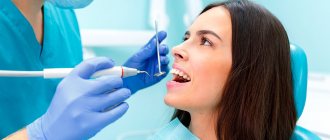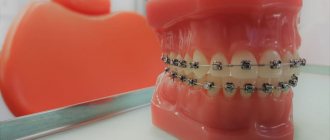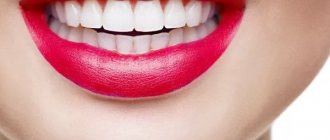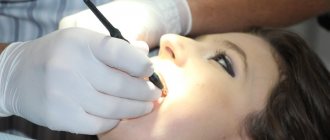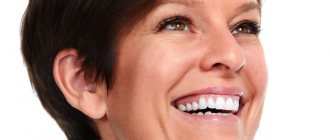You've probably come across the name of a dental service such as professional oral hygiene in an advertisement or on the Internet. And many people reasonably ask: why do you need to do oral hygiene at the dentist, if you can brush your teeth at home with a brush and toothpaste, use rinses and balms that are sold in the store?
The reason is quite simple: even regular and properly brushed teeth at home does not help to completely cleanse the oral cavity of soft plaque; it continues to accumulate and various pathogenic microorganisms actively multiply in it.
Their activities are fraught with the development of caries and inflammation of soft tissues. In addition, plaque can change the color of tooth enamel and teeth look unsightly.
professional oral hygiene procedure in dentistry helps to effectively remove plaque from dental surfaces and from all hard-to-reach places and thereby carry out effective prevention of almost all dental diseases
of dental oral hygiene include what methods are used to carry out the procedure? So that you can have answers to all these questions, we have prepared detailed material on the topic of professional dental and oral hygiene.
What is comprehensive teeth cleaning
Each of us follows basic hygiene rules, including brushing our teeth twice a day. With the help of this simple manipulation, we remove plaque accumulated during the day or night. But the problem is that the interdental spaces and hard-to-reach areas remain uncleaned or not cleaned well enough. As a result, plaque begins to accumulate in these places, and then mineralizes, that is, turns into tartar. It is impossible to remove it with a simple brush and paste. In this case, only professional help from a dentist will help.
The doctor, depending on the type of deposits, may suggest one or another method of cleansing.
The specificity of the instruments used determines the narrow focus of the impact. For example, ultrasonic waves can crush stone, and Air Flow technology can remove soft plaque. Human teeth simultaneously contain both already fossilized and still soft fractions, so for total cleansing it is necessary to use not just one method of professional hygiene, but several procedures in combination. In addition, the enamel layer, having lost its “shell” and has already begun to demineralize underneath, becomes very vulnerable for some time. Therefore, to restore it, it needs recharge, in particular fluorine. Based on the above, we can conclude that only a set of cleaning and protective measures will help your teeth be healthy and beautiful. Comprehensive cleaning includes the following procedures:
- ultrasonic treatment;
- cleansing using Air Flow technology;
- polishing the enamel layer;
- fluoridation.
During professional cleaning, plaque is removed from gum pockets
At first glance, pockets in the gums may not be noticeable. If their depth is up to 1–2 mm, they do not cause concern. But with age, the gum line drops a little, and the neck of the tooth (root part) is exposed. Plaque accumulates in the pocket, causing inflammation.
Cleaning gum pockets is a separate treatment procedure. But with professional dental hygiene, prevention is carried out: Air Flow removes everything that has begun to accumulate in the pockets, preventing them from deepening.
Professional hygiene removes plaque from gum pockets
When is a procedural complex necessary and when it cannot be performed?
Indications for comprehensive cleaning:
- Prevention of caries and periodontal diseases
- Strengthening the enamel layer
- Improving smile aesthetics
- Removing tartar and soft deposits
- Eliminating bad breath
- Before dentures, implantation, installation of braces
- While wearing braces and after removing them
- For crowded teeth
Contraindications:
- Childhood
- Severe cardiovascular diseases
- Presence of a pacemaker
- Difficulty in nasal breathing
- Any disease in the acute period
- Allergy to components of medications used
How to remove plaque at home
The effectiveness of traditional methods depends on the thickness and density of the accumulated layer. If the deposits have appeared recently and are moderately soft, it is enough to clean them in the usual way using a brush.
When yellowish or dark pigmentation appears on the enamel, harder bristles and products with abrasives (Lacalut White, Rembrandt “Anti-tobacco and coffee”, etc.) come to the rescue. However, such compositions should be used only after consulting a dentist and with his approval. By scratching the enamel, you can significantly worsen the condition of your incisors, canines and molars, causing caries and more serious oral diseases.
The patient should simultaneously receive answers to two questions from the doctor:
- how to clean your teeth from plaque at home so that it is quick, painless, but effective;
- what mixtures and solutions to use for safe cleansing without negative consequences.
Many patients use improvised components that have been highly effective for many years. One of the most popular is activated carbon. The tablets are crushed with a spoon or mortar to obtain fine-grained particles that remove deposits and polish the surface. A damp brush is dipped into the resulting powder, after which standard cleaning is performed for several minutes. After using the drug, you should rinse your mouth thoroughly with water. To prevent increased sensitivity, this method cannot be used more than 2-3 times a week.
Baking soda is also often used. The procedure is exactly the same as in the previous case. In the same way, it is indicated to use industrial tooth powder.
Essential oils (lemon, tea tree) are also highly effective. This is the safest home option since there is no exposure to abrasives. There are several ways to use these compounds:
- add 4 drops of oily liquid to a glass of warm water, rinse your mouth after your usual regular brushing;
- drop onto the brush before cleansing without paste.
But do not rush to use advice without recommendations from a dentist.
The first stage is ultrasonic treatment
Ultrasound of a certain frequency is capable of coloring tartar into small fragments. Therefore, it is used to remove mineralized deposits on the enamel layer in the supragingival and subgingival zone. This procedure is the first item on a comprehensive list. An ultrasonic scaler destroys stone and, along with it, removes pathogenic microflora in the most inaccessible places of the dentition. Ultrasound is absolutely safe for human health in general and gums in particular. The scaler has an attachment that focuses ultrasound radiation on the area that needs to be treated. The device allows manual adjustment of the intensity of exposure. It is determined by the dentist depending on the conditions of a particular clinical case.
Important: a bonus of using ultrasound is its ability to destroy pathogenic bacteria, i.e., to disinfect the surface being treated. Therefore, dentists strongly recommend performing this procedure for patients with periodontal health problems, not only during a course of treatment, but also regularly to prevent inflammation.
Indications for the procedure
A hygienic procedure is prescribed to patients before dental treatment. Cleaning promotes efficient dental procedures. The procedure has other indications:
- the presence of implants, braces, crowns, veneers and lumineers in the oral cavity;
- stone formation;
- plaque due to poor nutrition;
- the patient’s desire to lighten the enamel by 2-3 tones.
Professional cleaning is recommended for patients suffering from chronic gastrointestinal diseases, as well as for women planning pregnancy. It is advisable to undergo it regularly for people who abuse coffee, tea, chocolate and smoke - these factors contribute to the rapid formation of pigmented plaque.
Second stage – Air Flow
After removing hard contaminants, it is time for deposits with a soft structure. Cleansing is performed using Air Flow technology. Using a special apparatus, a mixture of water, air and tiny grains of soda is applied to the surface of the patient’s teeth. The abrasive size is so small that it can destroy the bacterial film, but cannot leave scratches on the enamel surface. A stream of abrasive mixture directed under pressure destroys pigmented plaque and immediately washes it away. Thanks to this, the enamel is lightened to its natural tone (by about 1 - 2 shades on the Vita scale).
Note: the process is painless, but may cause slight discomfort for people with hypersensitive enamel. In this case, the doctor may suggest local anesthesia. Patients who are allergic to soda should not perform this cleaning.
Is it painful to undergo oral and dental hygiene at the dentist?
Many people are afraid to visit the dentist and experience strong negative emotions even before undergoing such simple procedures as dental and oral hygiene. In this case, there is no need to be afraid: ultrasonic cleaning, polishing and remineralization - all these activities do not cause pain!
However, if you have increased tooth sensitivity, deep periodontal pockets will have to be cleaned - local anesthesia can be given, which completely removes all painful and unpleasant sensations during dental and oral hygiene.
And our dental clinic in Moscow - “Firadent” is ready to offer you two innovative services - dental and oral hygiene under sedation, that is, in a dream, as well as teeth cleaning under a microscope!
Third stage - polishing
Deposits leave microcracks and irregularities on the enamel layer. Therefore, polishing is necessary after cleaning procedures. Otherwise, the remaining roughness will become a “magnet” for microparticles of food, which will very quickly turn into new deposits. Polishing is performed using abrasive pastes and various attachments driven by a drill. These are polishers, brushes, discs, needle-shaped attachments. The interdental areas are polished with special strips. The process does not cause pain and takes about 40 minutes.
Possible negative consequences
After the procedure, in some cases, patients experience bleeding gums and tooth sensitivity to thermal irritants. As a rule, this discomfort is temporary and goes away after a few days. Possible reasons:
At the time of cleaning, the patient’s gums were inflamed, and the condition was aggravated due to the stone located on the subgingival part of the teeth. In this case, the next step will be periodontal treatment. Damage to soft tissues during dental treatment. Ultrasound and sandblasting have a mechanical effect on the teeth, so after the procedure, swelling, bleeding or soreness of the mucous membrane may occur. The problem can be eliminated by rinsing with sage or chamomile infusions. Damage to healthy gums due to unprofessionalism of doctors. This complication is very rare, especially when the procedure is performed by specialists in large cities.
Category Hygiene Published by kosmetik-dent
The fourth stage - fluoridation
As a rule, fluoridation is not included in the calculation of comprehensive professional hygiene, but it is very important for dental health. The application of fluoride helps strengthen the enamel layer (prevents the leaching of calcium), reduces hypersensitivity, prevents the onset of caries (slows down the proliferation of pathogenic bacteria). Therefore, you should not refuse this procedure. Fluoridation algorithm: the doctor dries the surface to be treated with a warm air stream, then applies fluoride varnish (a harmless composition based on varnish with a high concentration of fluorides) to each element of the dentition, then dries it.
Note: after completing all stages of comprehensive cleansing, teeth become noticeably lighter, reaching their natural natural color. But those patients who dream of a snow-white smile can resort to whitening, for example, using the ZOOM-4 method.
Dentists' tips for caring for your teeth after a comprehensive cleaning
It is in the patient’s interests that the effect of the complex of procedures lasts as long as possible. Therefore, it is important to follow the following recommendations from your dentist in the first few days:
- do not eat or drink for 2 hours after visiting the dentist;
- You should brush your teeth for 3–5 minutes after each meal and at night;
- possible increase in enamel sensitivity. Do not consume food or drinks that are too hot or too cold;
- try not to smoke, tobacco tars eat into the enamel very quickly;
- Reduce (or eliminate) from your diet foods and drinks that contain high amounts of natural and artificial coloring substances.
The dental network offers comprehensive teeth cleaning services. Our clinic offers family and savings discounts. Doctors are highly qualified and improve their skills in leading dental clinics in Russia and Europe. The level of services provided meets international standards.
Branches of our orthodontic center are located in Moscow within walking distance from the metro:
- Art. Alekseevskaya (VDNKh district, etc. Mira), address: st. 3rd Mytishchiskaya house 3, building 2;
- Art. Shelepikha, address: Shelepikhinskaya embankment, address: building 34, building 1.
We will make your teeth strong, beautiful and healthy! Come and see for yourself.
Contraindications
Despite the effectiveness of the procedure, as well as the harmlessness and safety of professional teeth cleaning in dentistry, in some cases, cleansing methods are contraindicated. This is relevant when:
- diagnosing acute infectious diseases of bacterial or viral etiology;
- inflammation of the mucous membranes of the oral cavity;
- minors (under 18 years of age).
There are also individual limitations specific to individual patients. For example, this may include increased sensitivity of incisors, canines and molars, allergic reactions to anesthetic components and other substances. In any case, you will need a mandatory consultation with a dentist; he will consider all the advantages and compare them with possible risks.
Are there any restrictions for pregnant women
During pregnancy, you need to take care of your health, since the mother is responsible not only for her own body, but also for the condition of the child in the womb. The oral cavity should be given special attention. During the gestational period, many types of professional teeth cleaning in dentistry are allowed (as done using ultrasound and other methods, discussed above), but it is important to take into account some points.
The gestation period is of great importance. In the third trimester, the procedure is contraindicated, since due to stress it can cause intense uterine contractions and lead to premature birth. Until the 28th week of gestation, you can have your teeth cleaned by a hygienist if the expectant mother feels well and the gynecologist at the antenatal clinic has not found any contraindications.
When you come to the clinic, you should notify the doctor about your pregnancy. This way you can choose the safest and most effective method of cleansing.
Are there any restrictions for children and teenagers
Some parents believe that baby's milk units do not require careful care and treatment, since they will fall out anyway and be replaced by permanent ones. If oral hygiene is neglected, premature extraction may be required, which will negatively affect the subsequent eruption of molars, canines and molars.
A child should not be taken to ultrasound and laser, since such methods can harm the fragile and thin children's enamel. How the procedure is carried out, professional teeth cleaning is done for small patients:
- a special paste is applied to strengthen hard tissues and prevent caries;
- “Air-Flow” delicate cleansing is performed (over 6 years of age);
- manual processing (the dentist must have extensive experience and a high qualification category).

